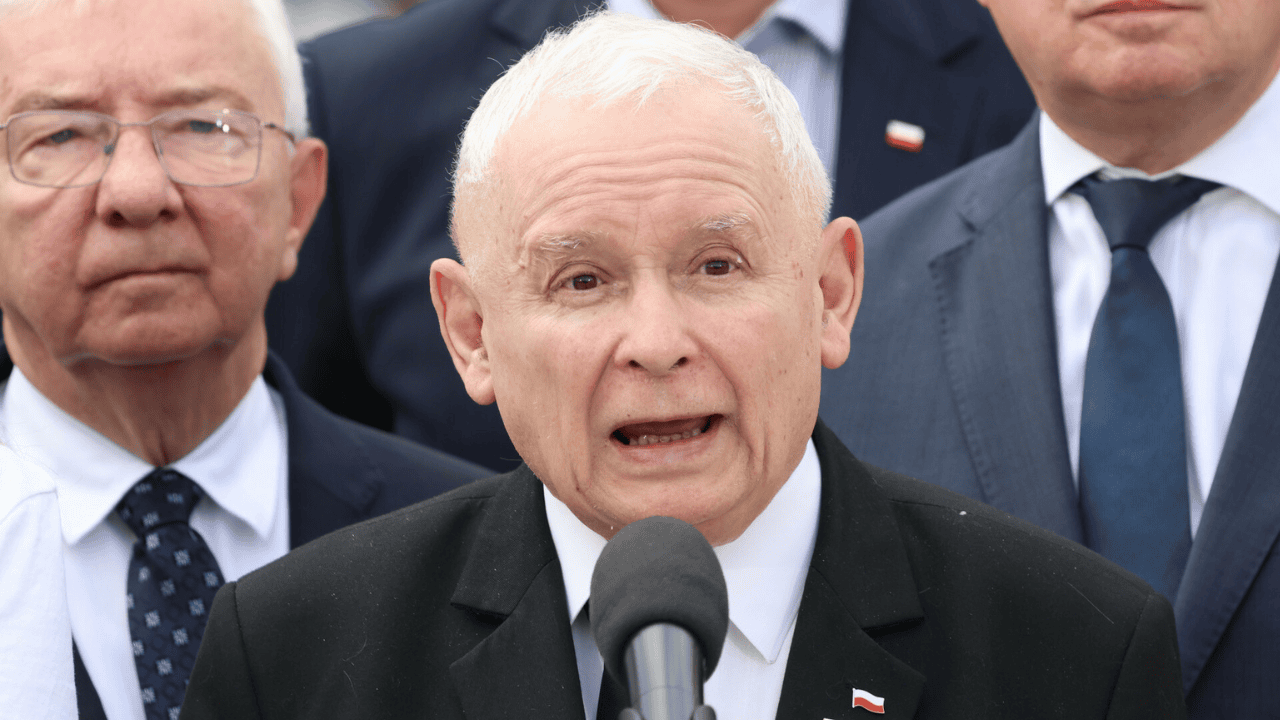
Aviation history features numerous advanced fighter jets that promised dominance but faced cancellation before service.
These projects showcased innovative designs, from stealth capabilities to supersonic speeds, yet budget issues, politics, and competition halted their progress.
 Taking off from the USS George Washington. | Photo Credit: Lockheed Martin.
Taking off from the USS George Washington. | Photo Credit: Lockheed Martin.10 Dangerous Fighter Jets that Never Entered Service
Fighter jets represent the peak of engineering and defense technology, yet some of the most advanced designs never reached operational service.
These aircraft promised unmatched speed, stealth, or versatility, but politics, costs, and shifting strategies sealed their fate before they could shape history.
From Europe to Asia and the United States, projects emerged that pushed the limits of aviation. Together, these cancelled jets remain icons of ambition, demonstrating how politics and economics often outweigh pure technological innovation.
Here’s the list of the top 10 most dangerous fighter jets that never entered service, which haven’t reached to production stage from prototype.
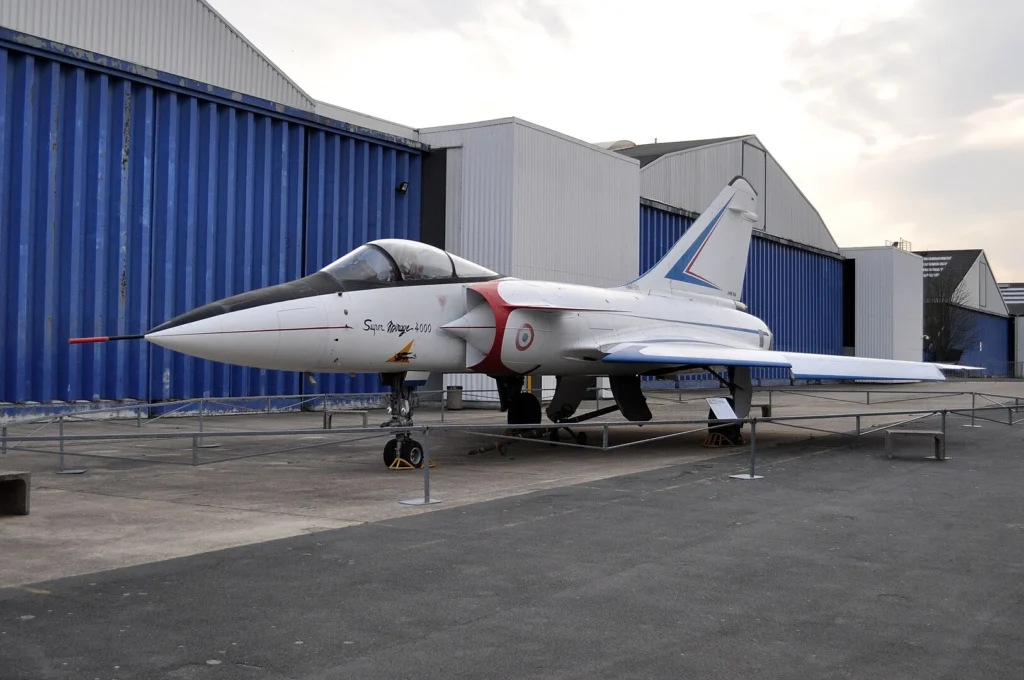 Photo: By ERIC SALARD from PARIS, FRANCE – Super MIRAGE 4000 Musée de l’air et de l’espace LBG, CC BY-SA 2.0, https://commons.wikimedia.org/w/index.php?curid=49711368
Photo: By ERIC SALARD from PARIS, FRANCE – Super MIRAGE 4000 Musée de l’air et de l’espace LBG, CC BY-SA 2.0, https://commons.wikimedia.org/w/index.php?curid=4971136810. Dassault Mirage 4000
The Dassault Mirage 4000 was one of France’s most ambitious fighter jet projects, designed during the late Cold War to compete with the American F-15 Eagle and Soviet Su-27.
Developed as a larger, twin-engine variant of the Mirage 2000, the Mirage 4000 carried advanced radar systems, extended range, and superior avionics, making it a true air superiority contender.
First flown in 1979, the jet demonstrated speed, agility, and modern weapons integration. Unlike the lightweight Mirage 2000, the 4000 was intended for long-range dominance, giving France and its allies a potential edge in high-intensity conflicts. Despite its impressive performance, the aircraft never entered full production.
The primary reason for its cancellation was cost. The French government decided to invest in the smaller, more affordable Mirage 2000, leaving the Mirage 4000 as a single prototype. Political and budgetary priorities ultimately outweighed the promise of a larger, more capable jet.
Today, the Mirage 4000 remains preserved in a French aviation museum, symbolizing what could have been a generation-defining fighter for Europe. Its cancellation underscores how strategic choices, not technical shortcomings, often determine the fate of advanced aircraft.
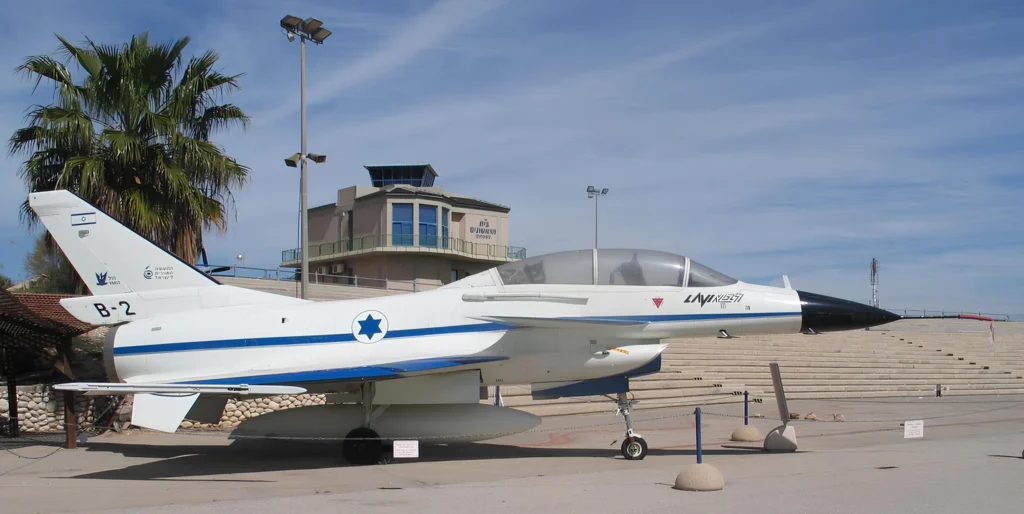 Photo: By Bukvoed assumed (based on copyright claims). – No machine-readable source provided. Own work assumed (based on copyright claims)., CC BY 2.5, https://commons.wikimedia.org/w/index.php?curid=610816
Photo: By Bukvoed assumed (based on copyright claims). – No machine-readable source provided. Own work assumed (based on copyright claims)., CC BY 2.5, https://commons.wikimedia.org/w/index.php?curid=6108169. IAI Lavi
The IAI Lavi was one of Israel’s boldest defense projects, developed in the 1980s as a multirole fighter tailored to the country’s unique security needs.
Featuring a delta wing with forward canards, advanced fly-by-wire controls, and state-of-the-art avionics, the Lavi promised exceptional maneuverability and precision in both air-to-air and air-to-ground missions.
The aircraft made its maiden flight in 1986 and quickly proved itself in testing. Pilots praised its agility and modern systems, which placed it on par with leading fighters of its era.
The Lavi was designed not only for Israel’s defense but also as a strong export candidate, potentially competing with American jets in global markets.
However, the program became the most expensive defense project in Israel’s history at the time. Costs spiraled, and concerns grew in Washington that the Lavi would rival US aircraft, such as the F-16, in international sales.
With mounting American pressure, internal political debates, and budgetary limits, the program was cancelled in 1987.
Although it never entered service, the Lavi’s technology was not wasted. Its innovations influenced later Israeli aircraft systems, missile programs, and even joint projects with the United States, leaving a lasting mark on modern defense development.
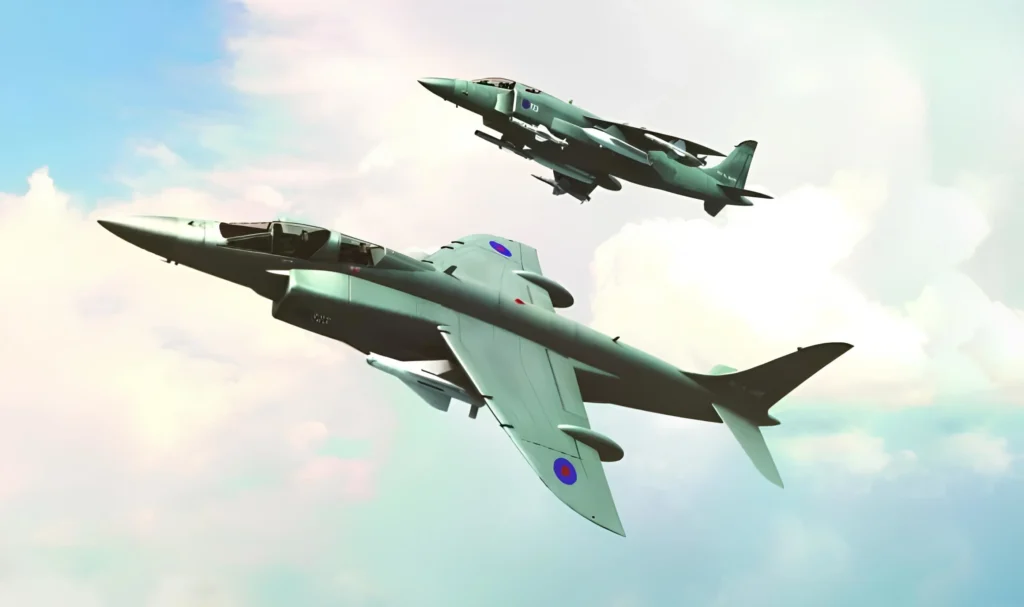 Photo: ADRIAN MANN
Photo: ADRIAN MANN8. Hawker Siddeley P.1154
The Hawker Siddeley P.1154 was Britain’s ambitious attempt in the 1960s to create the world’s first supersonic vertical takeoff and landing (V/STOL) fighter.
Conceived as a successor to the Harrier, the P.1154 aimed to combine Mach 2 performance with vertical launch capability, a combination that would have revolutionized air combat and naval aviation.
Developed for both the Royal Air Force and the Royal Navy, the aircraft promised unmatched versatility.
It was designed to deliver high-speed interception, close air support, and carrier operations without the need for long runways. If successful, it would have placed Britain decades ahead in fighter technology.
However, political disagreements, shifting defense priorities, and rising costs quickly undermined the program.
Disputes between the RAF and Royal Navy over differing operational requirements further complicated development.
By the mid-1960s, the government decided to cancel the project in favor of adopting the American F-4 Phantom II.
The P.1154 never left the blueprint stage, but its vision influenced future vertical takeoff concepts. It remains a striking example of how innovation can falter when ambition collides with politics and limited budgets. Had it succeeded, it might have transformed both British and NATO airpower.
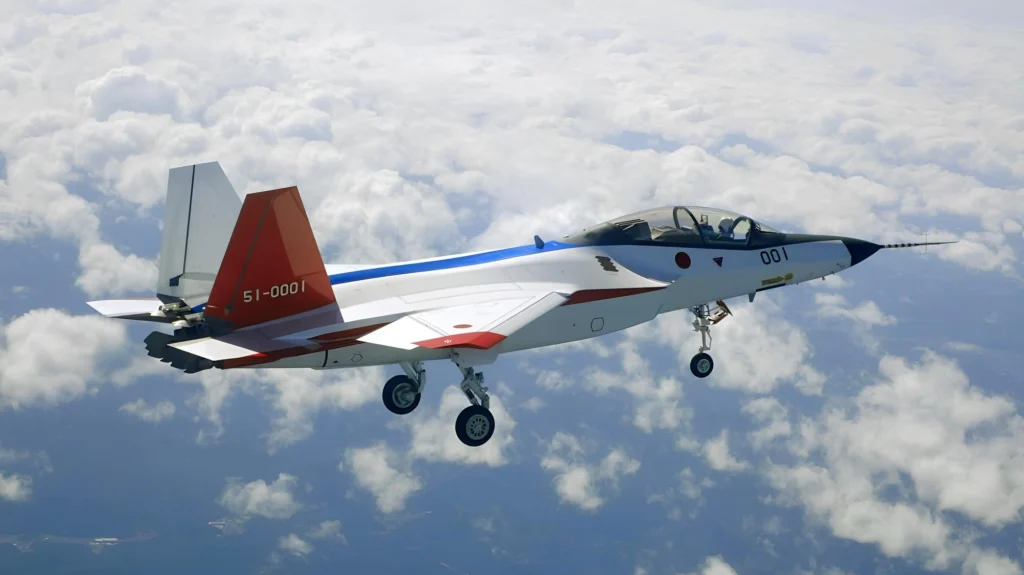 Photo: By 防衛装備庁 (航空自衛隊撮影) – X-2(先進技術実証機)の初飛行結果について 防衛装備庁ホームページ https://web.archive.org/web/20160424030437/http://www.mod.go.jp/atla/pinup280422.pdf, CC BY 4.0, https://commons.wikimedia.org/w/index.php?curid=48615530
Photo: By 防衛装備庁 (航空自衛隊撮影) – X-2(先進技術実証機)の初飛行結果について 防衛装備庁ホームページ https://web.archive.org/web/20160424030437/http://www.mod.go.jp/atla/pinup280422.pdf, CC BY 4.0, https://commons.wikimedia.org/w/index.php?curid=486155307. Mitsubishi X-2 Shinshin
The Mitsubishi X-2 “Shinshin” marked Japan’s bold step into the world of fifth generation fighter technology.
Developed as an advanced research aircraft, it was designed to test stealth shaping, thrust vectoring engines, and fly-by-light controls, features intended for a future indigenous stealth fighter.
The X-2 completed its first flight in 2016, proving Japan’s ability to design and build sophisticated stealth platforms independently.
Equipped with an active electronically scanned array (AESA) radar and advanced composite materials, the Shinshin showcased the nation’s capacity to compete with leading aerospace powers.
Its successful test flights demonstrated agility, reduced radar visibility, and advanced maneuvering potential.
Despite its promise, the aircraft was never intended for mass deployment. Instead, it served as a technology demonstrator, guiding Japan’s long term defense strategy.
Soon after, Tokyo shifted focus to the Global Combat Air Programme (GCAP), a joint sixth generation fighter initiative with the United Kingdom and Italy.
Although the X-2 never became an operational fighter, its impact is lasting. The data and technologies derived from it laid the foundation for Japan’s next generation airpower, ensuring the country remains at the forefront of stealth and advanced fighter development.
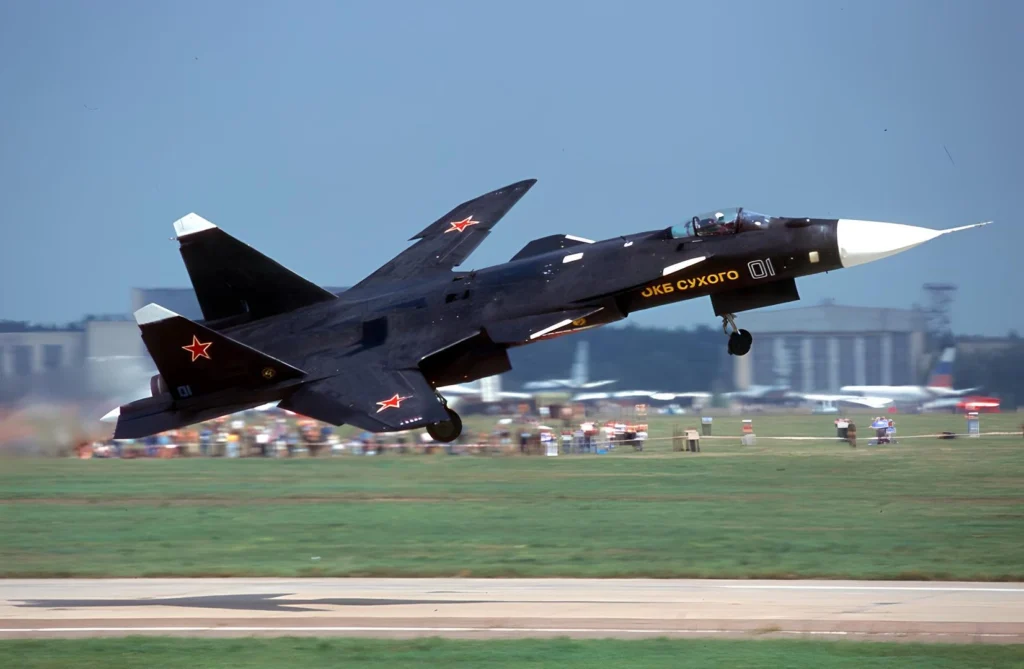 Photo: By Leonid Faerberg – http://www.airliners.net/photo/Russia—Air/Sukhoi-Su-47-Berkut/0195643/&sid=0614627465150d0600a53ca7a33c5e86, GFDL 1.2, https://commons.wikimedia.org/w/index.php?curid=16196521
Photo: By Leonid Faerberg – http://www.airliners.net/photo/Russia—Air/Sukhoi-Su-47-Berkut/0195643/&sid=0614627465150d0600a53ca7a33c5e86, GFDL 1.2, https://commons.wikimedia.org/w/index.php?curid=161965216. Sukhoi Su-47 Berkut
The Sukhoi Su-47 “Berkut” was one of the most visually striking fighter prototypes ever built, thanks to its radical forward swept wing design. Developed in the 1990s, the aircraft aimed to test advanced aerodynamics and materials for future Russian combat aircraft.
Its unusual wing layout granted exceptional agility, particularly at high angles of attack, giving it maneuverability unmatched by traditional designs.
First flown in 1997, the Su-47 incorporated features such as thrust vectoring engines, composite materials, and stealth oriented shaping. It demonstrated promising performance in test flights, validating the aerodynamic advantages of forward swept wings.
However, the design also created significant engineering challenges, including structural stress and maintenance complexity.
The collapse of the Soviet Union left Russia with limited defense funding, making the Su-47 too costly to pursue. Only a single prototype was completed, and the program was eventually cancelled.
Despite this, the aircraft was not a failure. Technologies developed during the Berkut project directly influenced the design of Russia’s fifth generation fighter, the Sukhoi Su-57.
Today, the Su-47 stands as a unique milestone in experimental aviation—a bold attempt to break away from conventional designs. Its legacy lives on in modern Russian fighter technology, even if the jet itself never entered service.
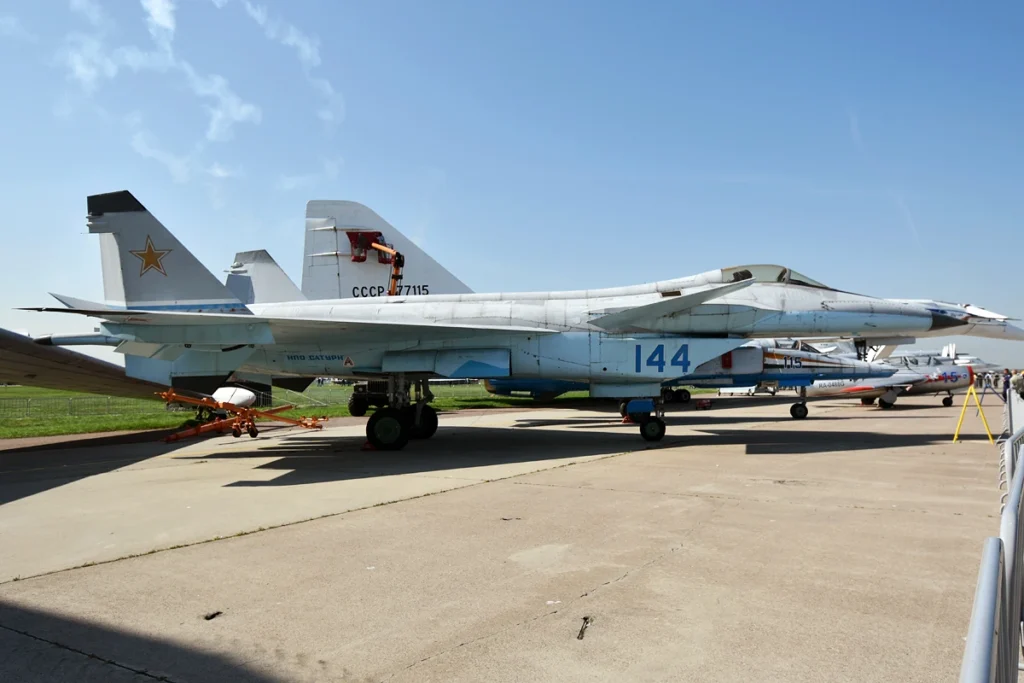 Photo: By Anna Zvereva from Tallinn, Estonia – Russian Air Force, 144, Mig-1.44 Flatpack, CC BY-SA 2.0, https://commons.wikimedia.org/w/index.php?curid=87441882
Photo: By Anna Zvereva from Tallinn, Estonia – Russian Air Force, 144, Mig-1.44 Flatpack, CC BY-SA 2.0, https://commons.wikimedia.org/w/index.php?curid=874418825. Mikoyan MiG 1.44 Flatpack
The Mikoyan MiG 1.44, often nicknamed “Flatpack,” was developed as the Soviet Union’s answer to the American F-22 Raptor.
Conceived in the late 1980s, it was intended to be the nation’s first true fifth generation stealth fighter, incorporating delta wings, forward canards, thrust vectoring engines, and advanced fly-by-wire systems.
The project suffered delays due to the collapse of the Soviet Union, which left the Russian defense industry struggling with severe funding shortages.
By the time the prototype finally flew in 2000, the design was already outdated compared to Western developments. The aircraft completed only one official flight, serving more as a technology demonstrator than a viable combat jet.
Despite its short lifespan, the MiG 1.44 showcased innovative stealth shaping and high maneuverability features.
Analysts believe it could have placed Russia ahead in stealth fighter development had it been funded and produced on schedule. Instead, the Russian government shifted focus to Sukhoi’s competing PAK FA program, which eventually produced the Su-57.
Though it never entered production, the MiG 1.44 remains an important step in Russia’s journey toward modern air superiority. Its cancellation highlights how economic collapse and strategic choices can derail even the most advanced military projects.
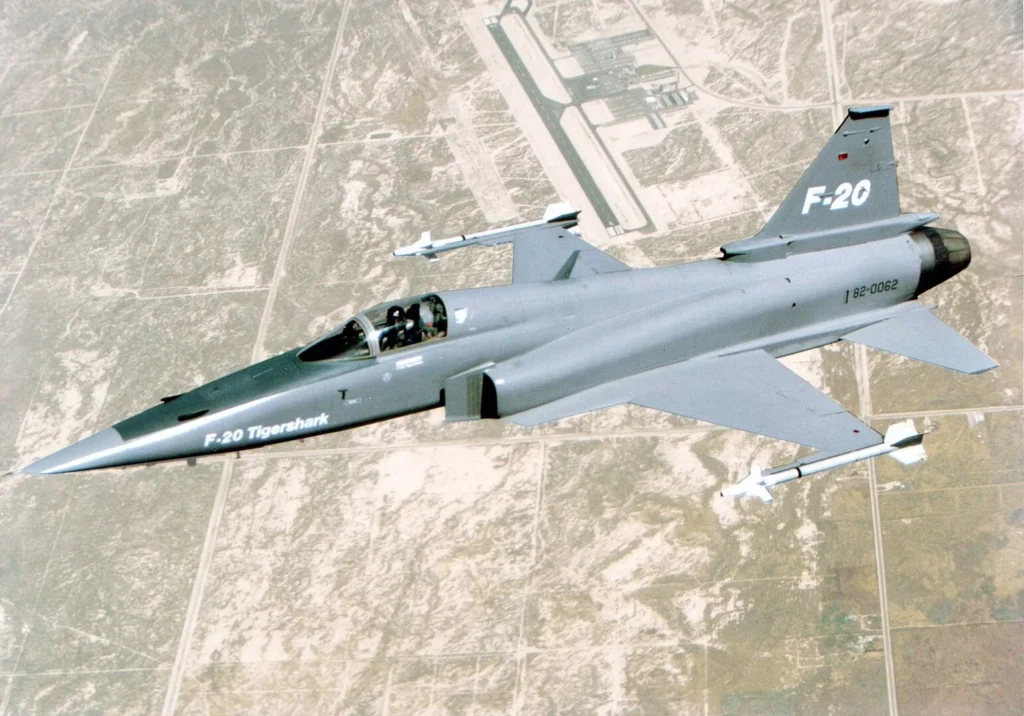 Photo: By U.S. Air Force – National Museum of the USAFhttp://www.nationalmuseum.af.mil/factsheets/factsheet.asp?id=2291http://www.nationalmuseum.af.mil/shared/media/photodb/photos/060810-F-1234S-030.jpg, Public Domain, https://commons.wikimedia.org/w/index.php?curid=204124
Photo: By U.S. Air Force – National Museum of the USAFhttp://www.nationalmuseum.af.mil/factsheets/factsheet.asp?id=2291http://www.nationalmuseum.af.mil/shared/media/photodb/photos/060810-F-1234S-030.jpg, Public Domain, https://commons.wikimedia.org/w/index.php?curid=2041244. Northrop F-20 Tigershark
The Northrop F-20 Tigershark was developed in the 1980s as an advanced, lightweight fighter designed primarily for US allies.
Based on the proven F-5 Freedom Fighter, the F-20 featured a powerful General Electric F404 engine, giving it excellent acceleration, a high thrust to weight ratio, and supersonic performance.
It also carried modern avionics, radar systems, and the ability to fire beyond visual range missiles, features uncommon in export fighters of its time.
Test pilots praised the Tigershark for its reliability, quick readiness, and relatively low operating costs. It was capable of outperforming many aircraft available to US partner nations, offering a strong balance of affordability and combat effectiveness.
Northrop marketed it as a cost efficient solution for countries that could not afford more expensive jets.
Despite its technical strengths, the F-20 faced insurmountable political and market barriers. The US government prioritized the sale of the F-16 Fighting Falcon, which was offered to allies at subsidized prices through defense agreements.
Buyers naturally preferred the F-16’s wider support network and political backing, leaving the F-20 without orders.
Ultimately, the Tigershark was cancelled, not because of design flaws, but because of strategic and economic realities. Today, it is remembered as a capable fighter that never received the chance to prove itself in service.
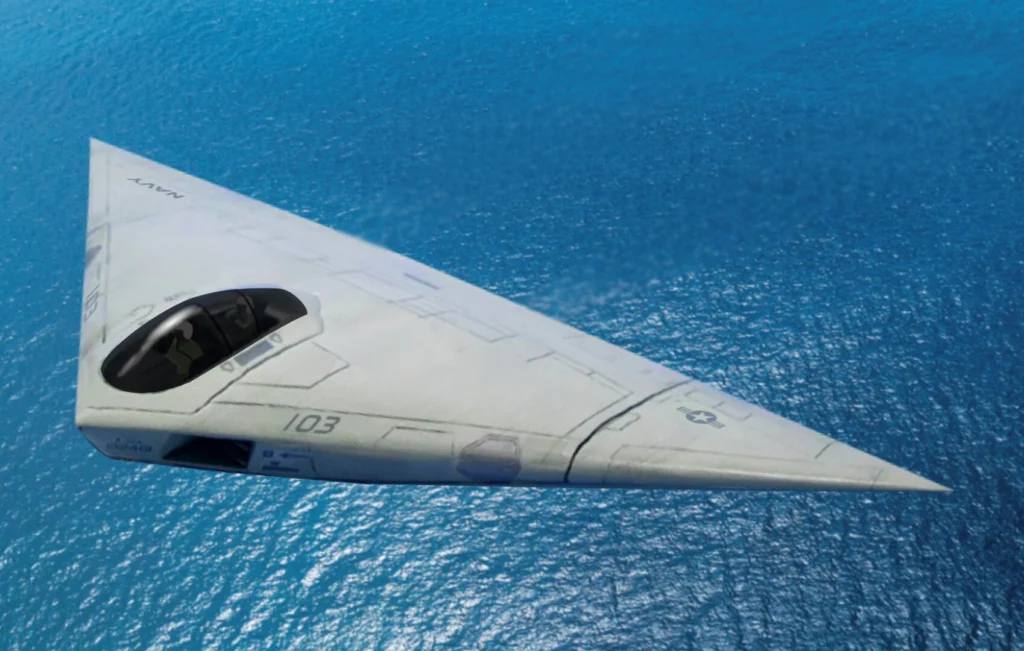 Photo: By FOX 52 – Own work, CC BY-SA 4.0, https://commons.wikimedia.org/w/index.php?curid=123139285
Photo: By FOX 52 – Own work, CC BY-SA 4.0, https://commons.wikimedia.org/w/index.php?curid=1231392853. McDonnell Douglas A-12 Avenger II
The McDonnell Douglas A-12 Avenger II was one of the most ambitious US Navy projects of the late Cold War.
Designed as a stealthy, carrier-based attack aircraft, the A-12 featured a distinctive triangular flying wing shape that earned it the nickname “Flying Dorito.”
Its mission was to replace the aging A-6 Intruder, providing the Navy with a radar evading strike platform for the 1990s and beyond.
The A-12 promised cutting edge features, including internal weapons bays, advanced radar absorbing materials, and all weather precision strike capability.
Had it succeeded, it would have been the first operational stealth jet capable of launching from aircraft carriers, decades before the F-35C.
However, the program quickly ran into insurmountable difficulties. The complexity of the design led to serious technical issues, while development costs spiraled out of control.
By 1991, the project had consumed billions of dollars with little to show in terms of progress. The US government cancelled the A-12, making it one of the most expensive failures in American military aviation history.
Though the aircraft never flew, its research was not wasted. Lessons from the A-12 helped inform later stealth programs, including the F-35. Still, the “Flying Dorito” stands as a costly reminder of the risks in pursuing revolutionary technology without adequate resources.
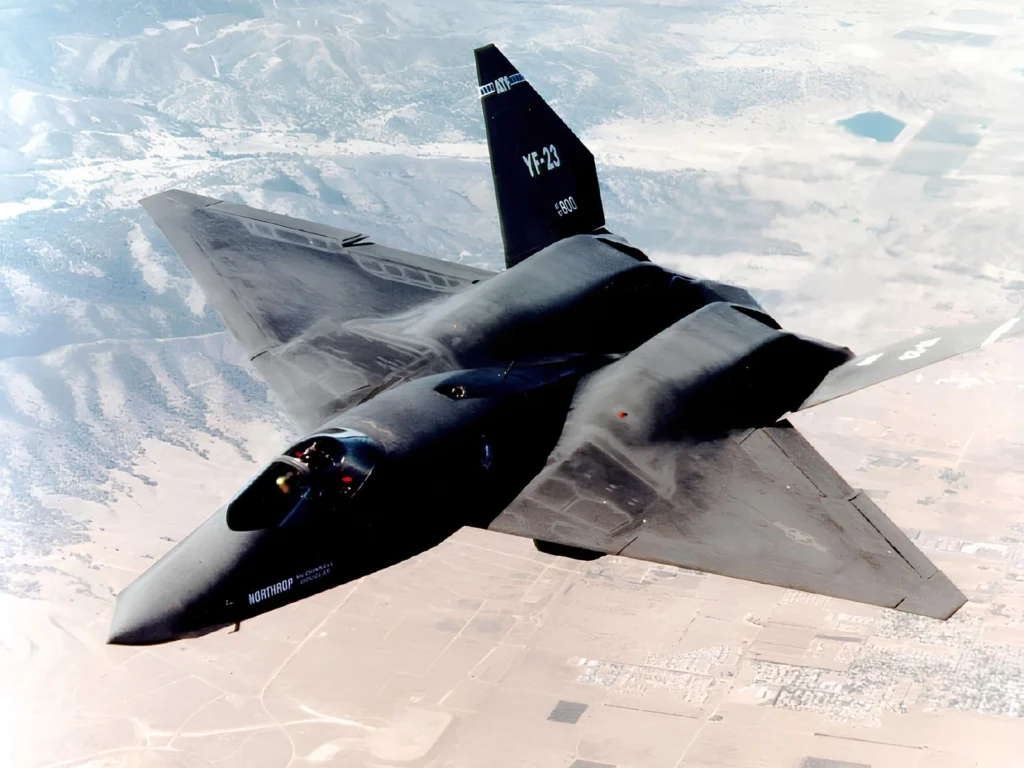 Photo: By SDASM Archives – https://www.flickr.com/photos/sdasmarchives/24898212240/, No restrictions, https://commons.wikimedia.org/w/index.php?curid=111797338
Photo: By SDASM Archives – https://www.flickr.com/photos/sdasmarchives/24898212240/, No restrictions, https://commons.wikimedia.org/w/index.php?curid=1117973382. Northrop YF-23 Black Widow II
The Northrop YF-23 “Black Widow II” was developed in the late 1980s as part of the US Air Force’s Advanced Tactical Fighter competition.
Designed to ensure American air dominance into the 21st century, it was pitted against the Lockheed YF-22 in one of the most high stakes contests in aviation history.
The YF-23 was faster, stealthier, and offered greater range than its rival. Its sleek, diamond-shaped design minimized radar detection, while its ability to supercruise without afterburners made it an advanced stealth platform.
Many engineers and analysts considered it more future-proof than the YF-22, particularly in terms of stealth and efficiency.
However, the YF-23 lacked the extreme agility that the Air Force prioritized at the time. Lockheed’s YF-22 demonstrated superior maneuverability in dogfighting scenarios, and combined with Lockheed’s stronger political ties, it ultimately won the contract.
In 1991, the Air Force selected the YF-22, which evolved into the F-22 Raptor, leaving the YF-23 prototypes to disappear into storage.
Despite its loss, the YF-23 remains a legend among aviation enthusiasts. Many still believe it represented a more advanced design that could have given the US an even greater technological edge in stealth warfare.
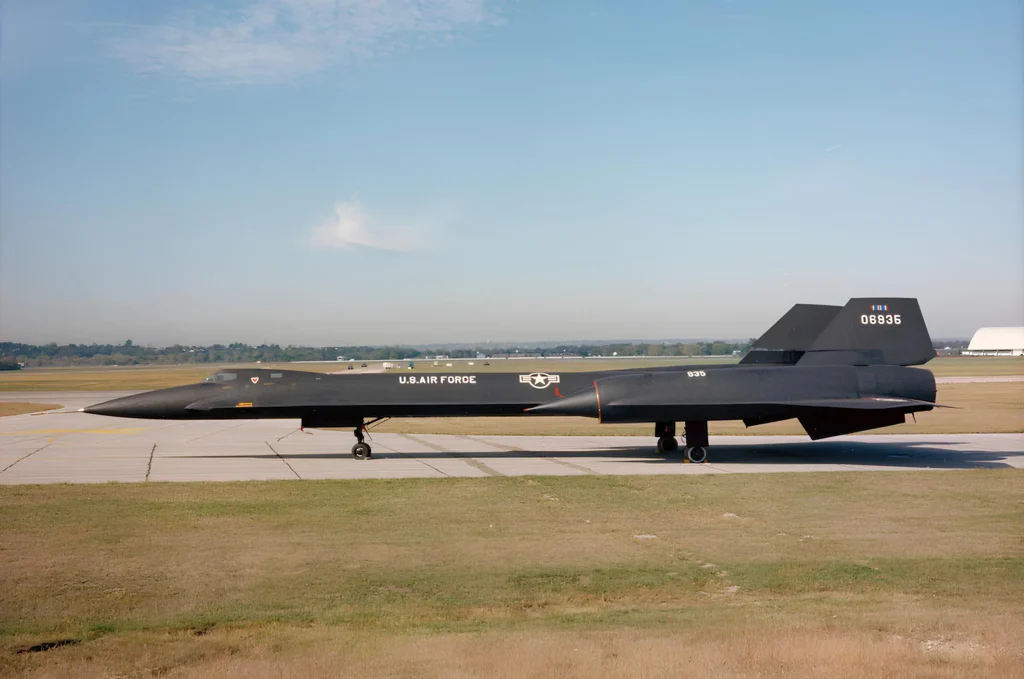 Photo: U.S. Air Force
Photo: U.S. Air Force1. Lockheed YF-12
The Lockheed YF-12 was a remarkable interceptor prototype developed in the 1960s from the legendary SR-71 Blackbird program.
Designed to defend US airspace during the Cold War, the YF-12 could reach speeds exceeding Mach 3, making it the fastest armed jet ever built.
Equipped with long range AIM-47 missiles and an advanced radar system, it was intended to intercept Soviet bombers before they could threaten North America.
First flown in 1963, the YF-12 performed exceptionally well during testing. Its unmatched speed and altitude capability gave it a level of reach that no other combat aircraft had achieved.
Pilots confirmed that it could outpace and outclimb nearly any adversary. In combat terms, it would have been nearly impossible to stop.
Despite its promise, the program was cancelled. Costs were extremely high, and the Vietnam War shifted US priorities toward versatile, multirole fighters rather than specialized interceptors. Only three prototypes were built, and the aircraft never entered full production.
Even without service entry, the YF-12’s legacy is profound. It helped validate systems and technologies later used in the SR-71 and influenced advanced interceptor concepts. To this day, it remains a symbol of Cold War speed, power, and the limits of aerospace ambition.
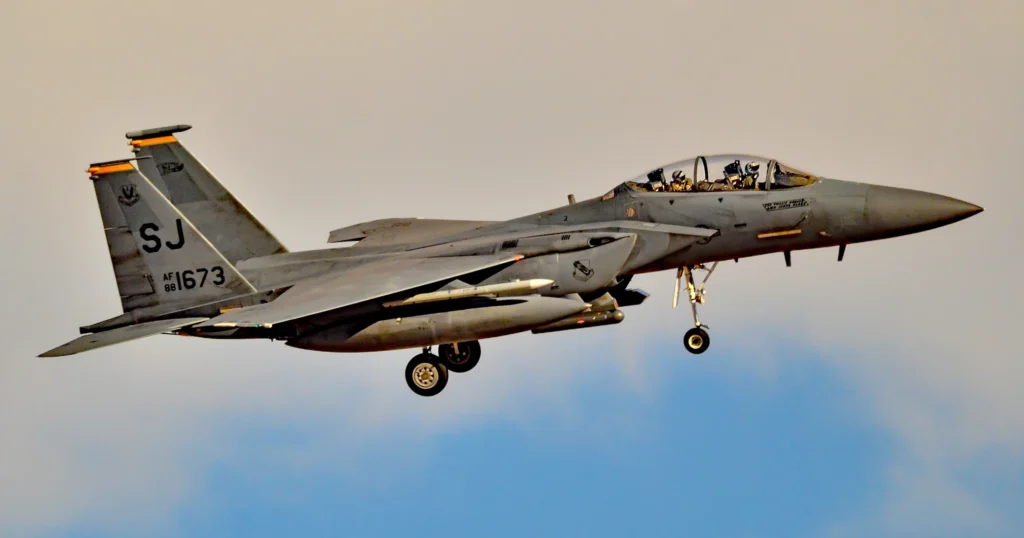 Photo: By Tomás Del Coro from Las Vegas, Nevada, USA – McDonnell Douglas F-15E Strike Eagle USAF 88-1673 336th FS “Rocketeers” 4th FW, Seymour Johnson AFB, NC, CC BY-SA 2.0, https://commons.wikimedia.org/w/index.php?curid=58158259
Photo: By Tomás Del Coro from Las Vegas, Nevada, USA – McDonnell Douglas F-15E Strike Eagle USAF 88-1673 336th FS “Rocketeers” 4th FW, Seymour Johnson AFB, NC, CC BY-SA 2.0, https://commons.wikimedia.org/w/index.php?curid=58158259Conclusion
These top 10 fighter jets highlight how politics, budgets, and strategy often override technology. Each had the potential to revolutionize aerial warfare, but instead became lessons in ambition, cost, and decision-making. Their legacies live on in the designs and technologies of today’s aircraft.
While none entered service, their innovations shaped future generations of fighters, leaving a lasting legacy in aviation history.
Stay tuned with us. Further, follow us on social media for the latest updates.
Join us on Telegram Group for the Latest Aviation Updates. Subsequently, follow us on Google News
Top 10 Fighter Jets in the World in 2025
The post Top 10 Most Dangerous Fighter Jets in the World that Never Entered Service appeared first on Aviation A2Z.






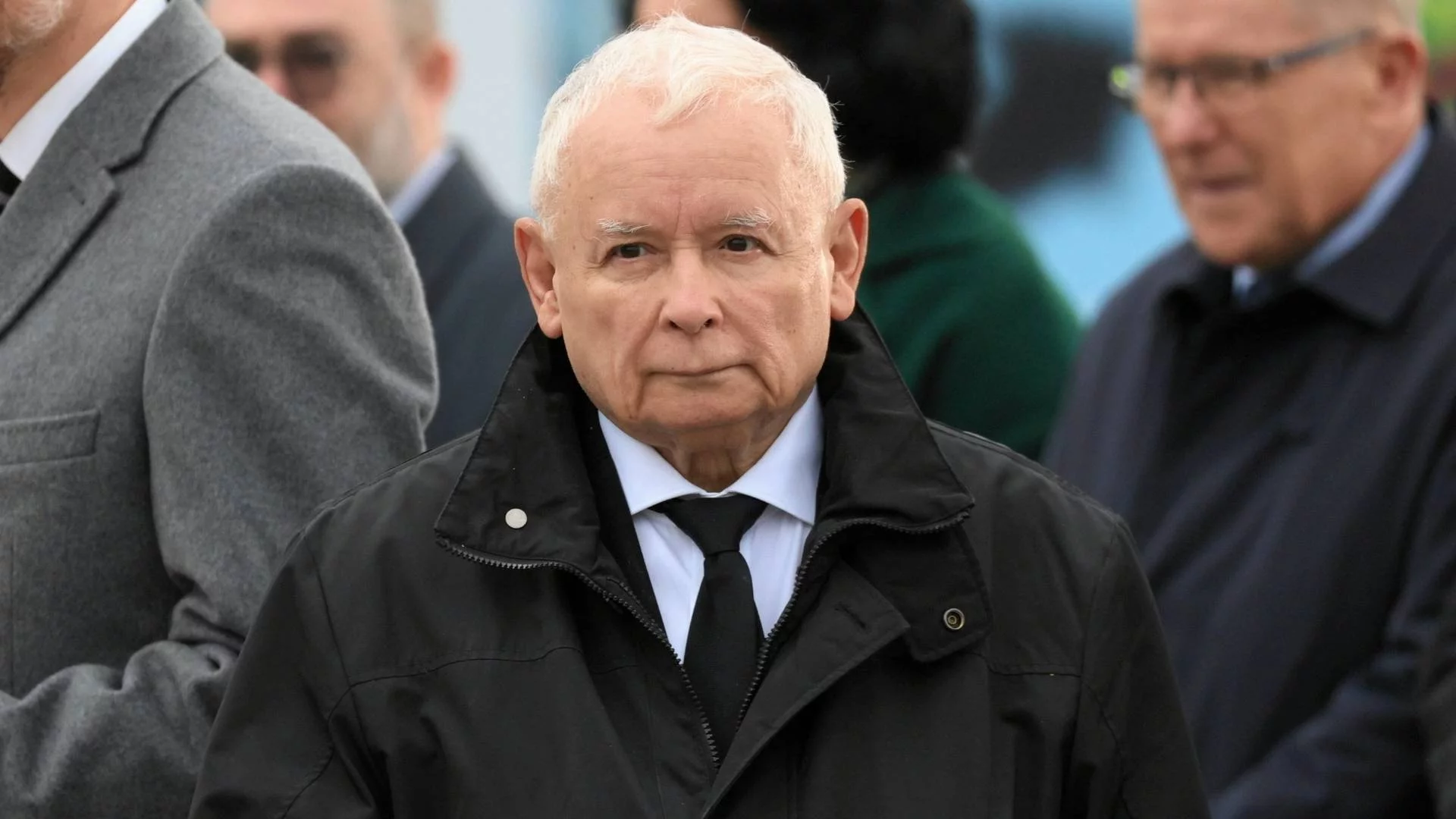
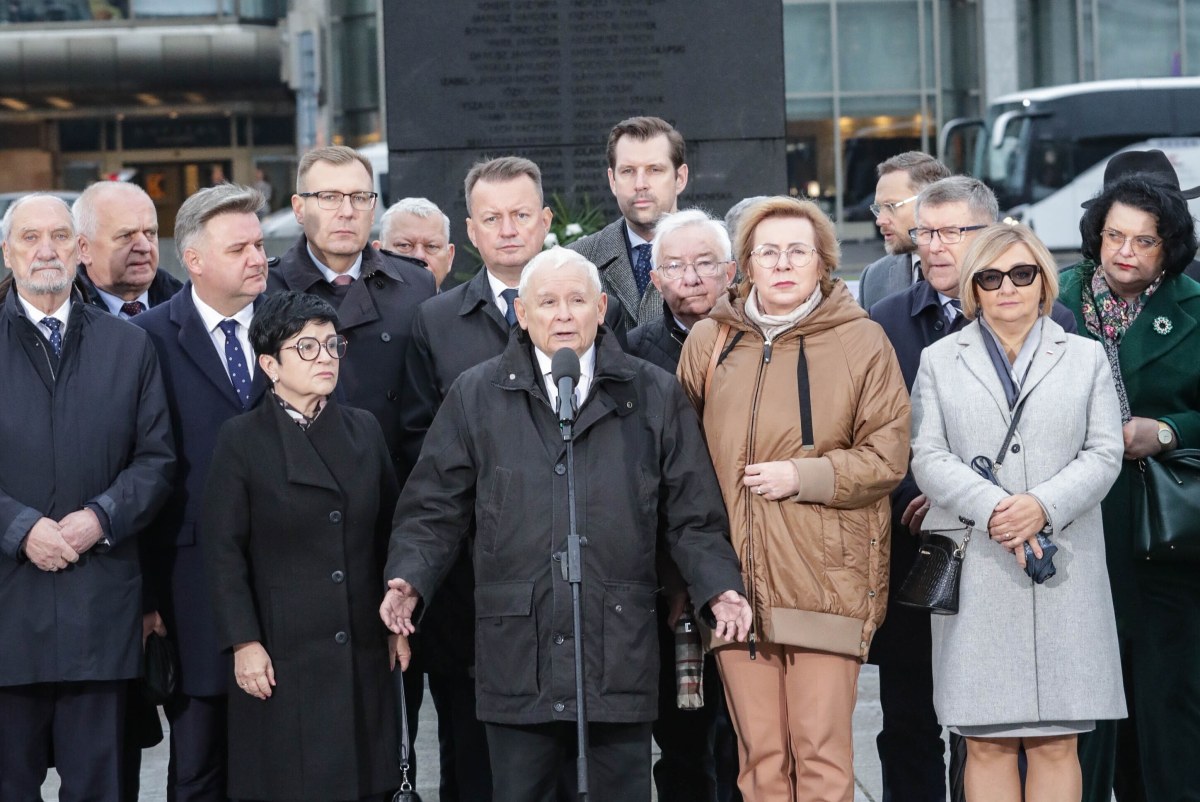
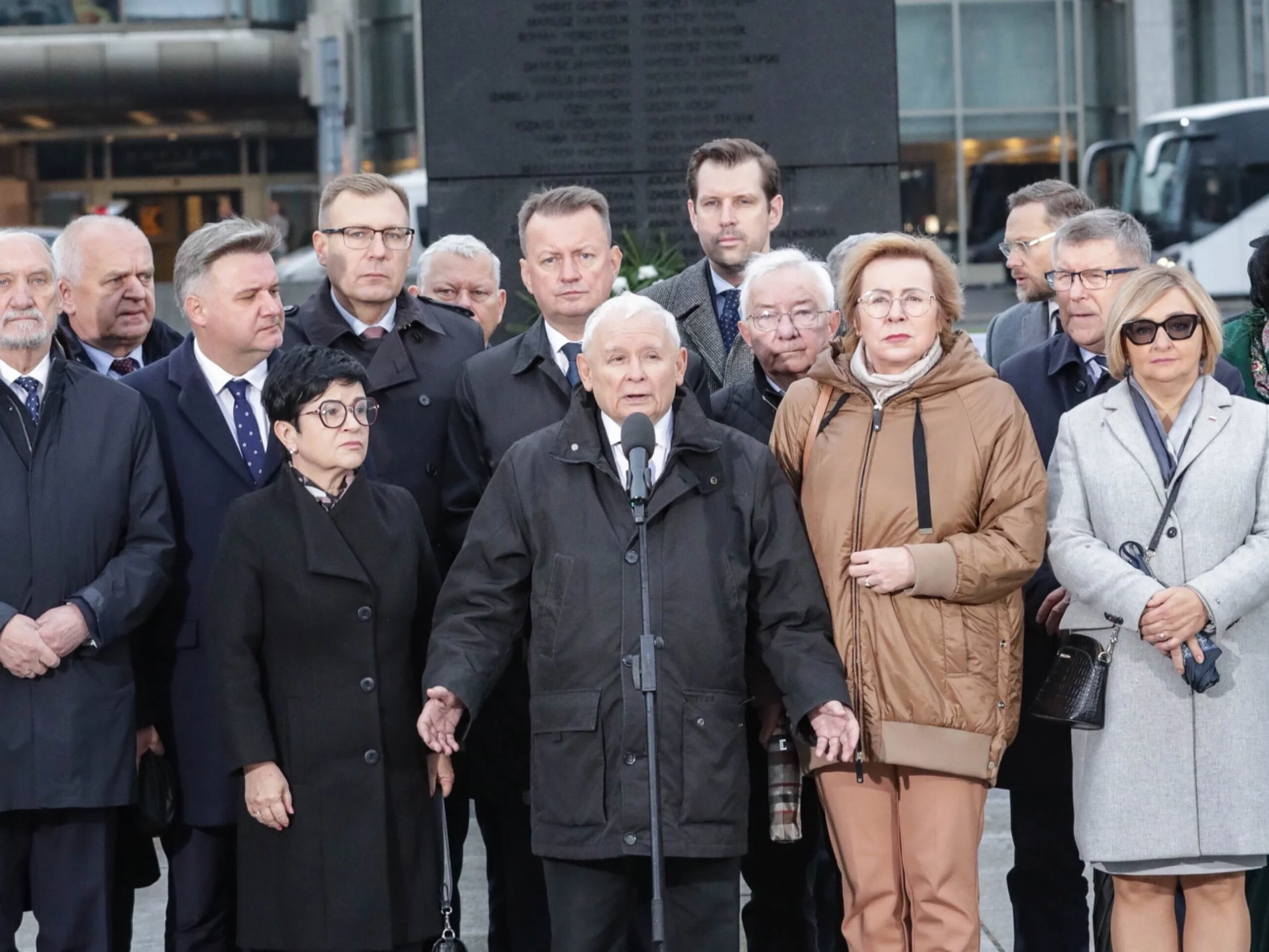
![A gdyby tak rzucić wszystko i wyjechać do Maroka… [zdjęcia]](https://tarnow.ikc.pl/wp-content/uploads/2025/10/ucieczka-do-tangeru-fot.-Artur-Gawle0001.jpg)

